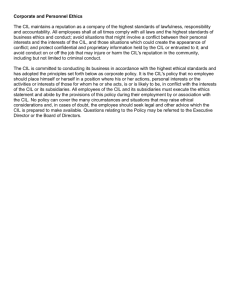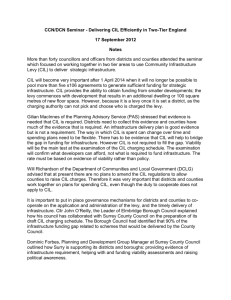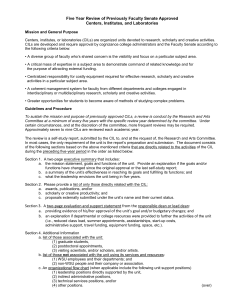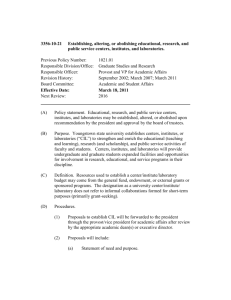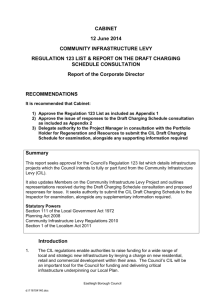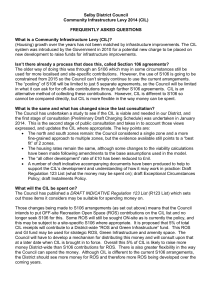Community Infrastructure Levy
advertisement
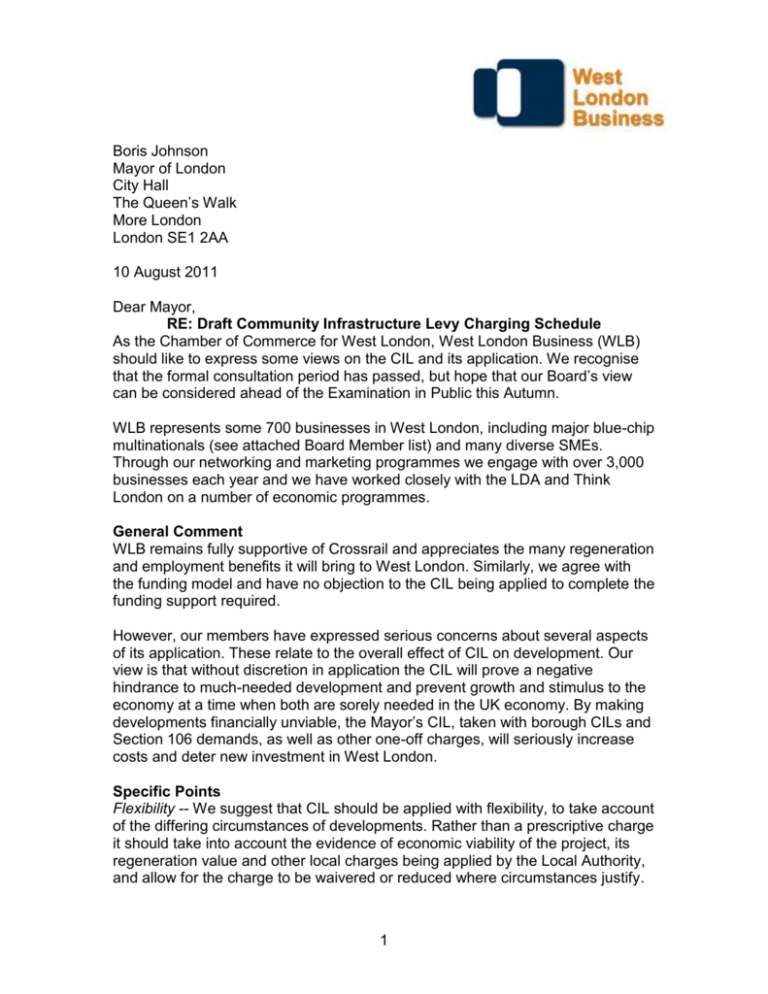
Boris Johnson Mayor of London City Hall The Queen’s Walk More London London SE1 2AA 10 August 2011 Dear Mayor, RE: Draft Community Infrastructure Levy Charging Schedule As the Chamber of Commerce for West London, West London Business (WLB) should like to express some views on the CIL and its application. We recognise that the formal consultation period has passed, but hope that our Board’s view can be considered ahead of the Examination in Public this Autumn. WLB represents some 700 businesses in West London, including major blue-chip multinationals (see attached Board Member list) and many diverse SMEs. Through our networking and marketing programmes we engage with over 3,000 businesses each year and we have worked closely with the LDA and Think London on a number of economic programmes. General Comment WLB remains fully supportive of Crossrail and appreciates the many regeneration and employment benefits it will bring to West London. Similarly, we agree with the funding model and have no objection to the CIL being applied to complete the funding support required. However, our members have expressed serious concerns about several aspects of its application. These relate to the overall effect of CIL on development. Our view is that without discretion in application the CIL will prove a negative hindrance to much-needed development and prevent growth and stimulus to the economy at a time when both are sorely needed in the UK economy. By making developments financially unviable, the Mayor’s CIL, taken with borough CILs and Section 106 demands, as well as other one-off charges, will seriously increase costs and deter new investment in West London. Specific Points Flexibility -- We suggest that CIL should be applied with flexibility, to take account of the differing circumstances of developments. Rather than a prescriptive charge it should take into account the evidence of economic viability of the project, its regeneration value and other local charges being applied by the Local Authority, and allow for the charge to be waivered or reduced where circumstances justify. 1 Exemptions – It is important that the CIL is levied in such a way as to allow exemptions. We can quote the example of Heathrow Airport, for example, which is already paying a substantial one-off contribution to Crossrail, as well as the associated business rate supplement. In addition, there may be important industrial developments for local employment, which will be rendered unviable if CIL is applied in all cases according to the published Schedule of Charges. Smaller developers, in particular, may face charges which are too high to bear. Double Charging – There is a clear danger that developments face double or even triple charging. With Section 106 in place, the Mayor’s CIL has now been outlined and, soon, the LAs’ CILs. It will be absolutely imperative for reasons of clarity and fairness that the Mayor’s and the LAs’ CIL’s charges are co-ordinated, so that developers are not facing a charging “auction”. Categories – WLB strongly urges a revision of the Charges Schedule to accommodate differential rates for various categories of development. For example, it is patently unfair that industrial, storage or distribution buildings should be subject to the same charges as commercial or residential, when returns for investment in rental terms for these buildings are clearly not so high. Borough Charges – With the Mayor charging different per metre rates in three zones in London, there is a clear temptation that some LAs will attempt to compensate as far as possible in the lower rate zones by charging as much as possible. It is highly likely LAs will maximise CIL returns in high paying zones also so as to maximise income for infrastructure development. WLB recommends close collaboration between the Mayor and boroughs and between the boroughs, or the system will become a postcode lottery with developers facing a multiplicity of charging schedules at high rates. Conclusion If the Mayor’s CIL is applied in a prescriptive and unaltered way, WLB’s view is that it will seriously deter delivery of many desirable regeneration projects and local developments, which could create jobs and prosperity for local areas, by making them economically unviable. There is an urgent need to revisit the charging schedule and allow for a more flexible approach in its application, which includes differential rates and exemptions. This is particularly compelling at a time when the Government has just published the draft National Planning Policy Framework, which is avowedly pro-growth and pro-economic recovery. The Framework expects local councils to be “positive and pro-active in encouraging sustainable growth” and makes clear that planning is to facilitate and deliver development, rather than erect barriers. With this in mind, WLB urges the Mayor to consider the points in this representation. 2 Finally, we would also request that the Mayor sets out a clear statement that the CIL will be ended when the £300 million target, necessary for Crossrail, has been reached. We hope you will be able to take account of our views and will be happy to provide any further information or background you may require. Sincerely yours, Frank Wingate Chief Executive 3
